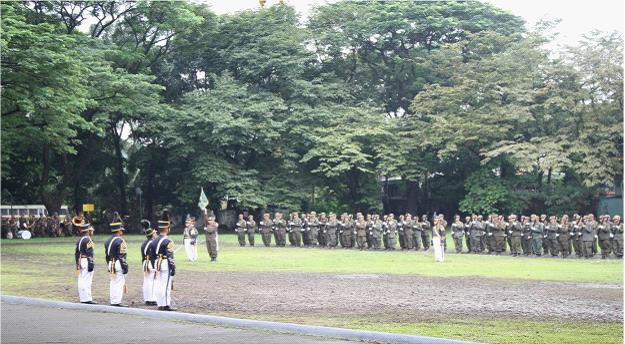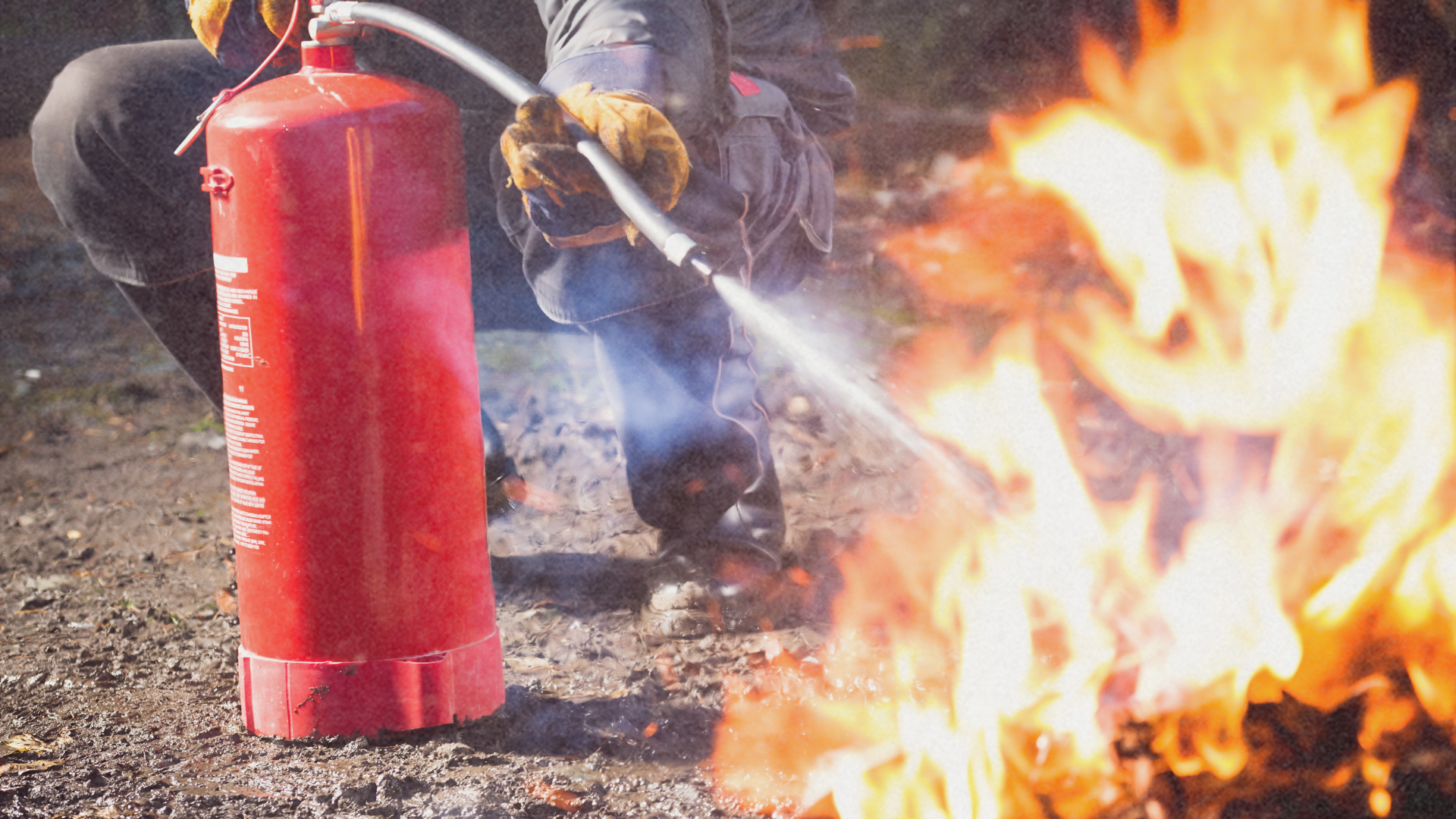(Second of Three Parts)

The ROTC Program of Instruction (POI)
In 2003, the Program of Instruction (POI) for both the Basic ROTC Summer and Regular Programs have been revised and improved to focus now on training ROTC cadets with basic knowledge on military subjects and practical exercises that will enable them to survive, shoot, and signal (3S). Such training is deemed to enhance the readiness of the individual reservist and reserve units to respond to the call of service. With this, all subjects that deal with the 3S concept were systemically placed under the POI of ninety (90) hours per semester, it was judiciously reduced to sixty (60) without compromising quality of training. This was done by reducing long hours of lectures and giving emphasis on practical exercises.
The first semester ROTC is now called Military Science (MS) 1 while the second semester is called Military Science (MS) 2 wherein the former is prerequisite of the latter. The POI for the ROTC component includes lectures, field works, and practical exercises focusing on the organization of the AFP, basic military principles and theories, customs and traditions in the military service, human rights, disaster and relief operations, basic survival, anti/counter terrorism, defensive techniques, team building, weapons familiarization, drills and ceremonies, among others.
The Revised AFP Modernization Act 10349
Among the objectives of the recently issued Department of National Defense (DND) Circular No. 3 dated 11 April 2013 regarding the Implementing Rules and Regulations (IRR) of the Revised AFP Modernization Act 10349, are the development of the capability of the AFP to uphold the sovereignty and territorial integrity of the Republic and to secure the national territory from all forms of intrusion and encroachment and the enhancement of the capability of the AFP to protect the Filipino people not only from armed threats but from the ill effects of life-threatening and destructive consequences of natural and man-made disasters and calamities, including typhoons, earthquakes, volcanic eruptions, major accidents in far-flung or inaccessible terrain or at sea, and from all forms of ecological damage. Through the implementation of the law, the AFP focuses to develop a credible defense posture that has a fully mission-capable regular and reserve force. Aligned with these objectives is the Revised AFP Modernization Program Force Restructuring and Organizational Development component which “shall develop the AFP into a compact, efficient, responsive and modern force with the capability to engage in conventional and/or unconventional warfare, disaster relief and rescue operations, and contribute to economic development and other non-traditional military roles”. The component explicitly requires that the reserve force and other reserve units will likewise be integrated into the overall force structure of the AFP. It will include an enhanced reserve force development program consistent with developing a citizen’s army as enshrined in the constitution.
The extended modernization program kicked off in 2013 and will be implemented in a 15-year period. As far as the reserve force development of the Revised Modernization Law is concerned, there is still no concrete implementation plan on how the AFP would be able to achieve a fully-mission capable status by 2028. The latest non-armed threats that have recently wreaked havoc in Central and Eastern Visayas particularly the 7.2 magnitude earthquake that shattered Bohol and Cebu provinces and the super typhoon Yolanda that devastated many parts of Eastern Visayas especially Tacloban City are wake up calls for our defense establishment’s capability to respond credibly to such non-traditional military roles. It is in these natural and man-made calamities where our AFP particularly its reserve force is put to test. This will be the barometer for our national defense preparedness more than our capability to defend and protect our sovereignty from external security threats. For how can we defend our national territory from armed threats if we cannot protect or respond promptly and systematically to non-military threats to our environment? Not that our AFP and its reserve force in those areas did not perform their mandate. They did. In fact many of them, reservists and ROTC cadets alike, paid the ultimate sacrifice for saving the lives of our countrymen. But we could have done more with effectiveness and efficiency if the AFP has a robust and fully equipped reserve force. With this, the AFP’s objective to develop a credible reserve force has been more pronounced with the Bohol earthquake and super typhoon Yolanda experiences. But just like the experiences in other countries, the human resource for a strong reserve force will primarily come from the youth and young adults (below 40 yrs old) which comprise 80% to 85% percent of our country’s total population of more than 98 million based on the 2013 survey. It is in this context that a reinvigorated mandatory ROTC program needs to be revived by our lawmakers if the government intends to develop a capable citizen army for national defense preparedness. It should be one that will be responsive to the ever dynamic security environment where non-traditional military roles will be increasingly in demand.
The Israel and Singapore models of conscription will be good case studies for the AFP. In Israel, their Defense Service Law requires a mandatory military service to its citizens both men and women as soon as they reach the age of 18. Men serve 3 years while women serve 2 years in the Israel Defense Forces (IDF). After they have completed their regular service, the IDF may call them up for reserve service up to one month annually until the age 40 or active duty immediately in times of crisis. Their reserve force played a crucial role during the Yom Kippur War with Syria in 1974 in turning the tide of the offensive against Syria which has defeated Israel in the earlier stage of the war. In the case of Singapore, it adopted a conscription model drawing on elements of the Israeli national conscription schemes. This was made possible with the help of Israeli military advisers, who were closely involved in the establishment of the Singapore Armed Forces. Their conscription called National Service (NS) requires all male Singaporean citizens and non-first-generation permanent residents who have reached the age of 18 to enroll for national service. They serve a 22- or 24-month period as Full Time National Servicemen (NSFs), either in the Singapore Armed Forces (SAF), Singapore Police Force (SPF), or the Singapore Civil Defence Force (SCDF). When a conscript completes his full-time service, he is considered to be “operationally ready,” and is thereafter known as an Operationally-Ready National Serviceman (NSman). NSmen are the equivalent of other countries’ reservists. Anyone who has visited these countries will agree that the youth of said countries have a high sense of discipline and patriotism and a high degree of social and security awareness because of a strict mandatory military service program in their respective armed forces.
(To be continued)







2 responses to “Mandatory ROTC Program: Key to National Defense Preparedness (Part 2 of 3)”
And the system should automatically make all optionally retiring regular officers as reserve officers! To take advantage of their training and experience! Ang hina talaga ng mga sistema natin! Malakas sa pangsarili pero mahina para sa bayan!
Agree. Had 2 yrs Basic ROTC , good preparation for plebe year in PMA. All served for an acceptable 4 yrs, at West Point for this not-so-snappy cadet.